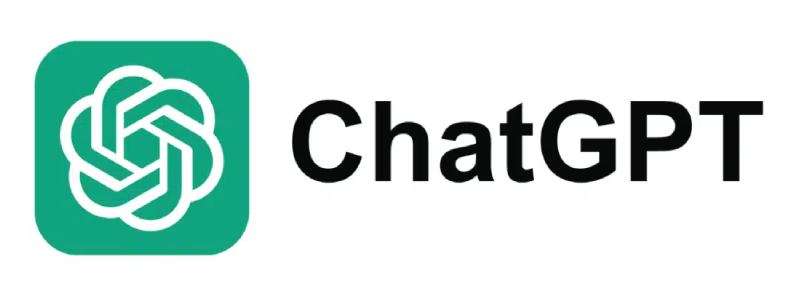App store ratings can make or break a game’s success. One surge of negative reviews can tank discoverability, stall downloads, and dent long-term revenue. Many of those reviews stem from issues that could’ve been fixed if they surfaced earlier inside the game, not in the store.
That’s where in-game feedback changes the equation. By capturing sentiment in real-time, you can prevent small frustrations from escalating into public complaints and protect your game’s ratings.
In this blog, we’ll explore why ratings matter, what’s broken with traditional feedback loops, and how Helpshift makes in-game feedback actionable. Let’s dive in.
Why Game Ratings Matter More Than Ever
Before we unpack how in-game feedback protects your reputation, it’s important to understand why ratings themselves carry so much weight. Here’s why:
The link between app store ratings and player acquisition
In gaming, app store ratings are growth levers. Every incremental star makes your title more discoverable and more likely to be downloaded. With thousands of new games launching each year, ratings are often the deciding factor between whether a player installs your game or your competitor’s.
How poor ratings damage brand trust and monetization
Low ratings ripple across your business: they erode brand trust, shrink your acquisition funnel, and compromise monetization strategies. Players assume poor ratings signal unresolved bugs or lack of support, which makes them less likely to invest in IAPs or premium content. In an industry where lifetime value is measured in microtransactions, trust is currency.
Common reasons behind negative reviews and how to catch them early
Most one-star reviews boil down to a few recurring themes: broken gameplay loops, unaddressed bugs, payment failures, or poor customer support. The common thread? They often could have been fixed if surfaced earlier, inside the game itself, instead of spilling out onto the app store.
The Problem with Traditional Feedback Loops
Collecting feedback after the fact doesn’t reveal what players actually felt in the moment, it only shows frustration after it’s too late to act. Here’s why traditional feedback loops fail:
Post-game surveys and emails often go ignored
Traditional survey methods, emails or push notifications days after a session rarely capture a player’s true sentiment. Average response rates hover in the single digits, leaving support teams blind to what’s really happening in-game.
Feedback comes too late to prevent churn
By the time you analyze post-game feedback, the damage is often done. That frustrated player who hit a paywall bug or lost progress has already quit and may have left a negative review that will linger long after the issue is patched.
Ratings are reactive, not reflective of ongoing engagement
App store reviews are a lagging indicator of your player experience. They reflect frustration that has already boiled over, not the real-time pulse of your community. Waiting for reviews to roll in means you’re always reacting, never preventing.
In-Game Surveys: Real-Time Feedback and Fixes
The fastest way to save ratings is to know what players feel while they’re still playing. In-game surveys deliver that visibility and here’s how they work.
Why timing and context matter for survey effectiveness
Feedback is only valuable if captured in the moment. In-game surveys meet players where they are right after they encounter friction or complete a milestone so their responses reflect their actual experience. Helpshift data shows in-app surveys generate response rates of 17.6% on average, with some games hitting 35%, compared to just 7% via email.
Targeting feedback requests based on player behavior
Not all players should see the same survey. Targeting based on behavior, such as failed purchases, repeated level retries, or event participation, ensures that feedback is both relevant and actionable. It also prevents survey fatigue.
Using in-game feedback to identify UX friction points early
Patterns of feedback around difficulty spikes, confusing UI flows, or monetization blockers provide product and design teams with the insights they need to act quickly. Instead of waiting for retention rates to dip, they can proactively patch and iterate.
How Helpshift Makes In-Game Feedback Actionable
Collecting feedback is easy. Making it actionable is harder. Helpshift bridges that gap by transforming in-game surveys into actionable insights and automated responses that enhance both player experience and support operations. Here’s how:
Smart survey triggers based on events or milestones
With Helpshift Messaging, surveys can be triggered at precise player moments, completing a level, abandoning a cart, or exiting mid-session. This makes feedback contextual and timely, rather than generic or disconnected.
Collecting CSAT without interrupting gameplay
Messaging also powers quick, mobile-friendly surveys, such as one-tap CSAT requests after a support interaction. Players stay in the flow of gameplay while studios still capture critical sentiment data.
Connecting feedback to player profiles for deeper insight
Through the Agent Workspace, every survey response is automatically tied to player profiles. Context, such as device, region, account history, and past support interactions, turns raw survey data into actionable insights.
Closing the loop: Automating follow-up support
With AI and Automation, negative feedback doesn’t just sit in a dashboard. Workflows can auto-trigger proactive refunds, send troubleshooting guides, or escalate to a live agent, ensuring players feel heard before issues turn into negative reviews.
Case Studies: Preventing Ratings Drops with In-Game Surveys
Jam City: Doubling CSAT with in-game knowledge base and messaging
Jam City, the studio behind hits like Cookie Jam and Harry Potter: Hogwarts Mystery, faced huge ticket volumes. By shifting to in-game messaging and self-service, they achieved a 90% ticket deflection rate and doubled their CSAT.
This change turned their support team from a reactive cost center into a driver of player loyalty.
SYBO: Boosting retention with automation and in-game support
With Subway Surfers’ massive player base, SYBO’s old email-based setup was hurting satisfaction. Helpshift’s in-app messaging and automation delivered 77% automation in under 3 months and lifted CSAT to 4.3.
The big shift came from keeping players inside the game for support, rather than forcing them to exit by email.
Bytro Labs: Managing 17K monthly tickets with a lean team
Bytro Labs supports over 15 million players with a team of just 2.5 agents. Helpshift’s automation handles 99% of tickets, allowing them to maintain high-quality support at scale.
Their team spends its time on complex player issues, while automation seamlessly manages routine queries.
Best Practices for Surveying Players In-Game
- Ask at the right time (and not too often): Trigger surveys at natural pauses in gameplay, never during high-intensity moments to avoid frustrating players.
- Keep it short, contextual, and mobile-friendly: Limit questions to one to three, make them tap-friendly, and use language that matches your game’s tone.
- Act on feedback and let players know you did: Show players their input mattered through patch notes, community updates, or direct follow-ups to build trust and sustain engagement.
Final Thoughts: Survey Smarter, Not Harder
In-game feedback gives you the chance to solve problems before they spill into app store reviews. By listening in the moment, acting quickly, and closing the loop with players, you turn ratings from a vulnerability into a growth lever. The result isn’t just healthier scores—it’s a stronger bond with your player community.
Ready to see how Helpshift makes this possible? Request a demo today and discover how smarter feedback loops can protect your ratings and keep players engaged.








